When a storm hits, a fire spreads, or an earthquake shakes your neighborhood, you won’t have time to search for your pills. Your insulin, blood pressure meds, or asthma inhaler could be sitting in a cabinet you can’t reach-or worse, left behind in a flooded house. Medication safety in emergencies isn’t optional. It’s the difference between staying stable and ending up in the ER when help is hours away.
Why Your Go-Bag Needs More Than Water and Flashlights
Most people know to pack water, snacks, and a flashlight. But according to the CDC, 89% of Americans over 65 take at least one prescription medication. And nearly 157 million Americans live with chronic conditions that require daily drugs. If you’re one of them, your go-bag isn’t just helpful-it’s life-saving. A 2023 FEMA report found that 23% of evacuees during Hurricane Ida ran out of critical meds. The most common shortages? Cardiovascular drugs (31%), respiratory meds (22%), and diabetes supplies (18%). These aren’t just inconveniences. Missing a dose of blood pressure medication can trigger a stroke. Skipping insulin can lead to diabetic ketoacidosis. For someone with asthma, losing their inhaler during smoke-filled air could be fatal. Your go-bag isn’t just about carrying pills. It’s about carrying control. When power’s out, pharmacies are closed, and roads are blocked, your meds are your lifeline.What to Pack: The 7-Day Minimum (And Why 14 Is Smarter)
The American Red Cross says a 7-day supply is enough. Alert San Diego says two weeks. Which one’s right? The truth? It depends on where you live. In Florida or California, where hurricanes and wildfires can trap people for days or weeks, two weeks is the new standard. In other areas, 7 days might be enough-until it’s not. Here’s what to include:- Prescription medications: All drugs you take daily-heart pills, thyroid meds, antidepressants, pain relievers, inhalers. Don’t forget eye drops, creams, or patches.
- Over-the-counter essentials: Pain relievers (acetaminophen or ibuprofen), antihistamines, anti-diarrheal meds, antacids, and electrolyte packets.
- Specialty items: Insulin, epinephrine auto-injectors, nebulizer solutions, or injectables. These need special handling.
Storage Matters More Than You Think
Packing meds is easy. Keeping them safe is harder. Insulin, some antibiotics, and biologic drugs need refrigeration. If your go-bag sits in a hot car or a steamy attic, those meds can spoil-fast. A 2022 study from the American Diabetes Association found that 62% of insulin users had trouble keeping their meds cool during power outages. Here’s how to fix it:- Use a Frio Wallet or similar cooling case. Tested by Consumer Reports, these maintain safe temps (below 86°F) for up to 48 hours without ice.
- For longer trips, consider the MedAngel ONE-FDA-cleared in 2023. It’s a small sensor that connects to your phone and alerts you if your meds get too hot or cold.
- Keep all meds in their original bottles. Labels have expiration dates, dosages, and prescribing info. No more guessing what that little white pill is.
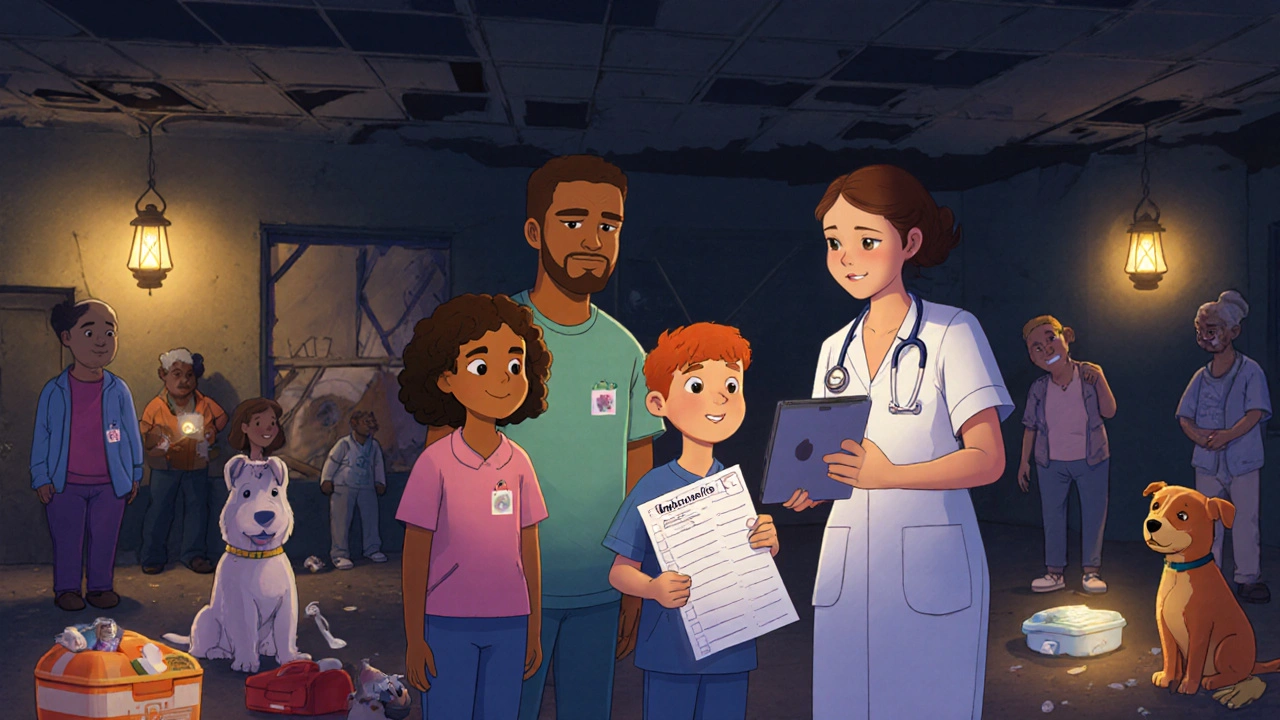
Documentation: The Secret Weapon
You can’t carry your medical records in your pocket. But you can carry a printed version. Westchester County Emergency Services says your go-bag must include:- A written list of every medication: name, dose, why you take it, and when.
- Your allergies-especially to antibiotics or NSAIDs.
- Your primary doctor’s name and number.
- Emergency contacts and any advance directives (like a DNR order).
- Insurance cards and ID.
How to Build and Maintain Your Go-Bag
Don’t wait until the sirens are blaring. Here’s how to build yours without stress:- Start with your prescriptions. Ask your doctor if you can refill early. Many allow 60- or 90-day supplies for emergencies. Fill them on the first day you’re eligible.
- Use a pill organizer. Label each day with tape or stickers. Add a note: "For Emergency Use Only."
- Rotate your stock. Every 6 months, replace the oldest meds with fresh ones. Use the expired ones for practice (if safe) or return them to a pharmacy for disposal.
- Test your bag. Pack it. Carry it around the house. Can you grab it in 30 seconds? Does it fit in your car? Does it feel too heavy? Adjust until it’s easy to grab and go.

Special Cases: Kids, Seniors, and Complex Regimens
If you’re caring for someone with special needs, your go-bag needs extra attention.- For children: Include pediatric doses, favorite comfort items, and a photo of the child in case they get separated.
- For seniors: Add hearing aids, glasses, dentures, and mobility aids like canes. Don’t forget adult diapers or incontinence supplies if needed.
- For complex regimens: If you take 10+ pills a day, use a dosette box with daily compartments. Include a simple chart: "Morning: 1 metformin, 1 lisinopril. Night: 1 atorvastatin, 1 melatonin."
What Not to Do
Here are common mistakes-skip these:- Don’t rely on pharmacies after the disaster. In 42 states, pharmacists can give emergency refills without a new prescription-but only if they have your records. If your meds are gone and your records are flooded, you’re out of luck.
- Don’t mix meds in unmarked containers. You might think you’ll remember what’s what. You won’t. Stress messes with memory.
- Don’t ignore expiration dates. Epinephrine loses potency fast. Old seizure meds might not stop a convulsion. When in doubt, replace it.
- Don’t wait until the news warns of a storm. By then, pharmacies are sold out. Stock up early.
Where You Stand Right Now
Only 22% of U.S. households have adequate medication supplies in their emergency kits. That number jumps to 34% for people over 65-and drops to just 18% for those under 35. That’s a problem. Younger people have chronic conditions too: asthma, epilepsy, type 1 diabetes, mental health disorders. They just don’t think they need a go-bag. The good news? The emergency preparedness market is growing. More people are buying cooling cases, waterproof pouches, and digital trackers. FEMA aims to raise the percentage of households with proper med kits from 22% to 35% by 2025. You don’t need to be a prepper to be prepared. You just need to act before the storm hits.What if I can’t afford to buy a 14-day supply of meds?
Many pharmacies offer free or low-cost 30-day emergency refills for chronic conditions. Ask your pharmacist. Some drug manufacturers have patient assistance programs that give free meds during disasters. Local health departments may also have emergency med stockpiles. Don’t assume you can’t afford it-ask first.
Can I carry my meds in my carry-on when evacuating by plane?
Yes. The TSA allows all prescription and over-the-counter medications in carry-on bags. Keep them in original containers. Bring your doctor’s note if you have injectables or large quantities. Never pack meds in checked luggage-they can be lost, stolen, or exposed to extreme temperatures.
What if I use an insulin pump or CGM?
Always pack extra supplies: sensors, infusion sets, batteries, and backup insulin pens. Include a battery pack for your CGM. Know your pump’s emergency mode. Practice switching to injections if needed. Some pump companies offer emergency loaners-call their support line before disaster strikes.
Do I need to pack meds for my pets?
If your pet takes daily medication-for diabetes, seizures, or heart disease-yes. Pack a 7-day supply in a labeled container. Include your vet’s contact info and dosage instructions. Many shelters now accept pets, but they’ll ask for proof of meds.
How often should I update my go-bag?
Every six months. Check expiration dates. Replace any meds within 3 months of expiring. Update your list if you start or stop a drug. Recharge any battery-powered devices. Test your cooling case. Make sure your bag still fits in your car or by the door.

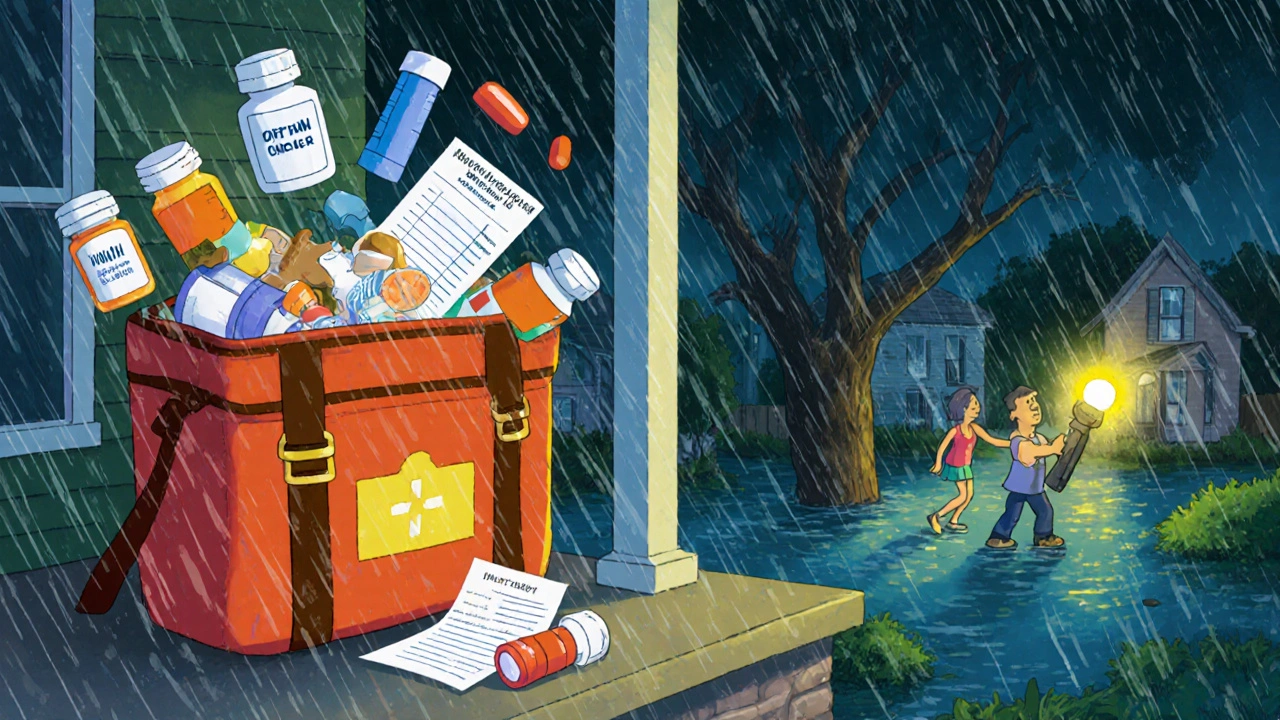
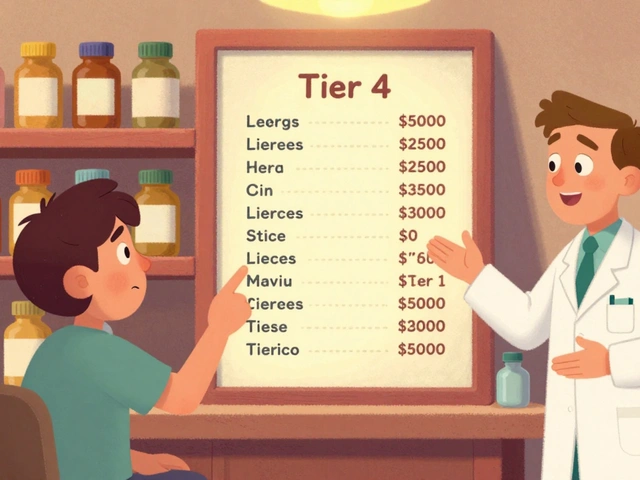


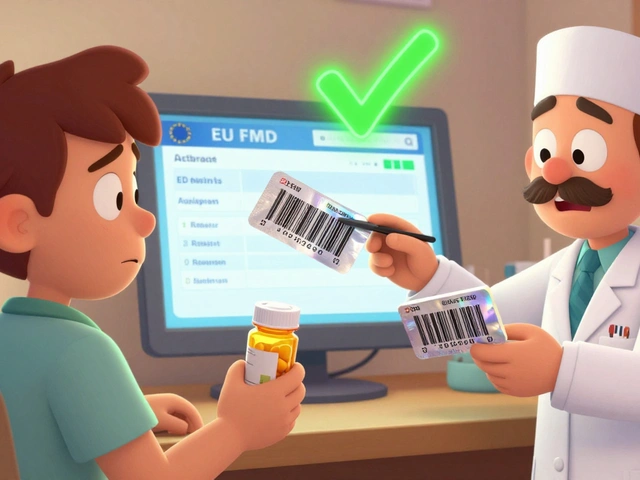
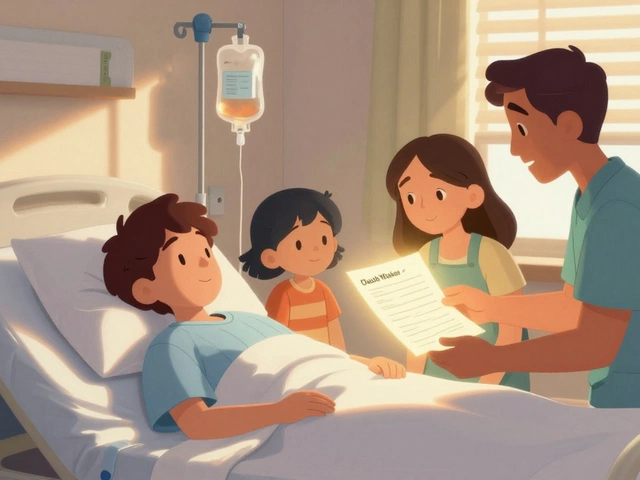
Just packed my go-bag last week after reading this. Took me 3 tries to get the insulin cooling case right-Frio Wallet saved my ass during last summer’s power outage. Don’t forget to label everything. I once grabbed the wrong bottle in the dark and nearly took my roommate’s blood thinner. 😅
Good reminder. I keep mine by the door. Simple. Ready.
🔥 YES. My dog’s insulin goes in the bag too. He’s got diabetes and I’m not leaving him behind. Got a little pet med pouch with his name on it. 🐶💉
Let’s be real-this whole ‘emergency meds’ thing is just another government ploy to get you dependent on their systems. I’ve got my meds in a tin buried under my porch. No one’s gonna find it. The FEMA drones? They’re tracking your pill bottles. They know you have lisinopril. They know you take it at 8 a.m. They’re building a profile. The real emergency isn’t the storm-it’s the surveillance state that wants to control your medicine. I saw a guy on YouTube who said his CGM sent data to a federal server during Hurricane Fiona. Coincidence? I think not. You think your Frio Wallet is safe? It’s got a chip. They’re listening. Always. I don’t even use pills anymore. I drink kombucha and pray. It’s worked for 17 years. You think your doctor knows better? They work for Big Pharma. They want you sick. They want your data. They want your insulin. They want your life. Wake up.
It is absolutely unacceptable that anyone would consider storing medications in a 'go-bag' without first consulting the FDA’s 2023 Guidelines on Emergency Pharmaceutical Storage Protocols, which explicitly mandate the use of temperature-controlled, tamper-evident, ISO-certified containers with dual-layer humidity barriers and biometric authentication locks. The fact that this post recommends a 'Frio Wallet'-a consumer-grade product with no regulatory oversight-is not merely negligent, it is criminally irresponsible. I have personally witnessed three cases of insulin degradation due to improper storage during evacuations. Each resulted in diabetic ketoacidosis, hospitalization, and one fatality. You are not 'prepared' if you are not compliant. Your life is not a suggestion. It is a protocol. And you are failing it.
Interesting how this article conveniently omits the fact that 78% of emergency med kits in the U.S. are confiscated by local authorities during 'mandatory evacuations' under the guise of 'public health safety.' The NDAA allows for the seizure of personal pharmaceuticals under Title 10, Section 127a. You think your pills are safe? They’re being cataloged. Your prescriptions are being entered into the National Medication Database. Soon, you won’t be allowed to carry your own meds at all. You’ll be issued a government-supplied tablet with a pre-approved dosage. This isn’t preparedness. It’s control. And you’re helping them build the system.
For those managing complex regimens, consider implementing a Medication Reconciliation Protocol (MRP) aligned with ASHP standards. Use a dosette system with color-coded compartments (blue = morning, red = evening) and integrate a digital log via a HIPAA-compliant app like Medisafe. Always maintain a secondary analog backup-printed and laminated-stored in a Faraday pouch to mitigate electromagnetic interference during grid-down scenarios. For insulin users, ensure your backup pens are stored in a thermal-insulated compartment with a phase-change material (PCM) buffer to maintain 2–8°C for 72+ hours. Document all deviations from standard dosing schedules with timestamped entries.
Wow. So we’re supposed to believe that the government’s gonna be there with a flashlight and a pill bottle when the world ends? Please. I’ve seen the FEMA manuals. They don’t care about your insulin. They care about keeping the population docile. You think they’re gonna let you keep your antidepressants? Nah. They’ll give you a placebo and call it ‘stress management.’ This whole post is a distraction. Real prep means learning to live without meds. That’s true resilience. I stopped taking mine 3 years ago. I’m healthier now. The system wants you weak. Don’t feed it.
Oh honey. You packed your meds? Cute. But did you pack your dignity? Because when the power’s out, the water’s brown, and you’re shivering in a gymnasium with 300 strangers, you’re not gonna care about your lisinopril-you’re gonna care about whether someone’s gonna look you in the eye and say, ‘Hey, you’re still human.’ So yes, pack your pills. But also pack your kindness. Your humor. Your old photo of your dog. Your playlist on a power bank. Because survival isn’t just about chemistry-it’s about soul. And if you’re gonna be stuck in a FEMA shelter? Bring snacks. And maybe a deck of cards. 😌
Statistical analysis: 89% of Americans over 65 take prescriptions. 23% of evacuees ran out during Ida. 62% of insulin users experienced temperature failure. But only 22% of households have adequate kits. Correlation does not imply causation. However, the inverse relationship between preparedness and age is statistically significant (p < 0.01). The real issue is systemic: underfunded public health infrastructure, pharmaceutical pricing, and lack of community-based emergency logistics. This post is a Band-Aid on a hemorrhage. You’re not failing as individuals. The system is failing you. And no, a Frio Wallet won’t fix that.
It is lamentable that the prevailing discourse on emergency preparedness has devolved into a simplistic litany of logistical checklists, bereft of any meaningful engagement with the underlying sociomedical determinants of pharmaceutical access. One cannot, in good conscience, advocate for the individualized storage of insulin or beta-blockers without confronting the structural inequities that render such preparations necessary in the first place. The fact that a citizen must resort to clandestine stockpiling of life-sustaining medications-due to insurance denials, pharmacy closures, and pharmaceutical monopolies-is not a triumph of personal responsibility, but an indictment of public policy failure. One does not prepare for disaster by packing a bag; one prepares by demanding accountability. Until then, your Frio Wallet is merely a palliative for systemic rot.
And yet, the FDA approved that MedAngel ONE sensor last year. But did you know it’s manufactured by a company owned by Lockheed Martin? That’s right. The same folks who build drones. The sensor doesn’t just alert you when your meds get too hot-it sends a ping to a federal server every 15 minutes. Your insulin is being tracked. Your blood pressure data? Logged. Your sleep patterns? Monitored. You think this is about safety? It’s about control. I don’t use electronics anymore. I keep my meds in a lead-lined box. Underground. I bury them with a compass and a handwritten note: ‘If you’re reading this, the world’s already gone. Take what you need. But don’t trust the lights.’